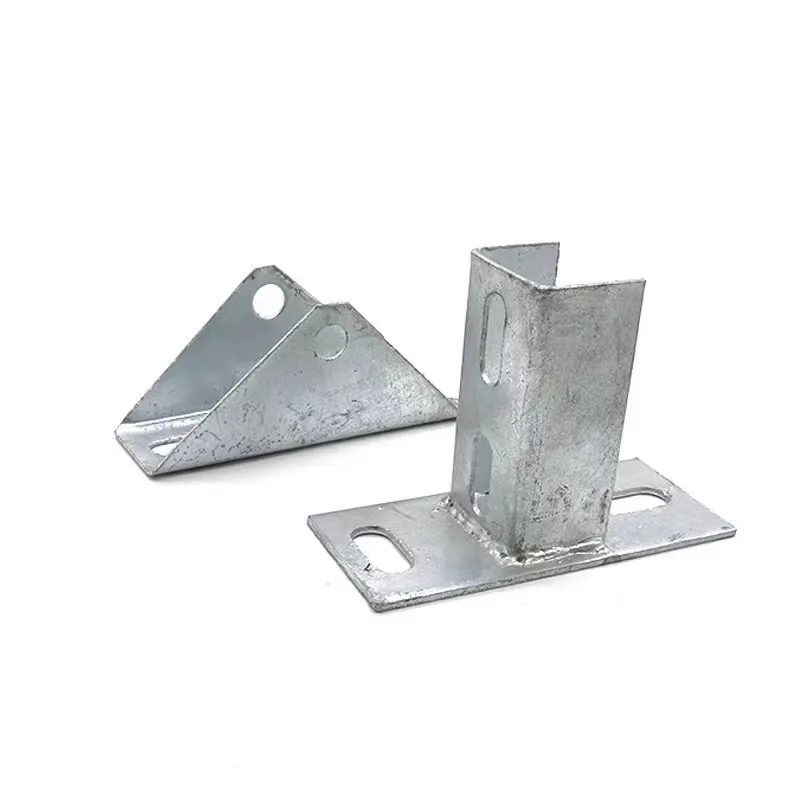

M6 Hex Nut Specifications and Applications in Mechanical Engineering
Nov . 09, 2024 06:10 Back to list
M6 Hex Nut Specifications and Applications in Mechanical Engineering
Understanding M6 Hex Nuts The Essential Fastener
When it comes to assembly, fastening, and construction, few components are as ubiquitous as hex nuts. Among the plethora of options available, the M6 hex nut stands out due to its specific dimensions and applications in various fields, including automotive, construction, and machinery. This article explores the characteristics, uses, and advantages of M6 hex nuts, contributing to their status as a cornerstone in fastening technology.
What is an M6 Hex Nut?
The term M6 refers to a metric hex nut that is designed to fit a 6mm bolt. Hex nuts are named for their six-sided shape, allowing for a firm grip with a wrench, making them easy to tighten or loosen. They are manufactured in several materials, including steel, stainless steel, brass, and nylon, to cater to specific environmental and mechanical requirements.
The dimensions of an M6 hex nut conform to international standards, specifically ISO 4032, which stipulates the width across flats (approximately 10mm) and the height of the nut (around 6mm). These standardized measurements ensure compatibility with M6 bolts, which are widely utilized in various applications.
Applications of M6 Hex Nuts
M6 hex nuts are versatile and can be found in numerous applications across multiple industries. Their primary function is to secure two or more components together, ensuring stability and integrity in assemblies. In the automotive sector, M6 hex nuts are used to fasten engine components, suspensions, and structural frames, providing reliability in high-stress environments.
In construction, they are frequently employed to join fixtures, beams, and other structural elements, contributing to the durability of the overall framework. Moreover, M6 hex nuts find use in the manufacturing of machinery, electronics, and even furniture, where precise fastening is crucial for functionality and safety.
m6 hex nut

Benefits of Using M6 Hex Nuts
1. Strength and Durability M6 hex nuts made of high-quality materials (like stainless steel) offer excellent resistance to corrosion, wear, and fatigue. This makes them perfect for both indoor and outdoor applications, ensuring they can withstand harsh environments.
2. Ease of Use The hexagonal shape allows for easy application of tools such as wrenches or sockets. The six sides provide multiple points of contact, enabling users to apply sufficient torque without slipping.
3. Standardization The availability of M6 hex nuts in various grades and finishes ensures standardization across different sectors. This uniformity not only simplifies inventory management but also facilitates compatibility with a wide range of bolts and other fasteners.
4. Cost-Effectiveness Given their widespread use and standardized manufacturing processes, M6 hex nuts are often produced in bulk, resulting in lower costs. They offer a reliable solution without breaking the bank, making them an economical choice for many industries.
Conclusion
M6 hex nuts are a fundamental component in the vast world of fasteners, providing an essential function in countless applications. Their design, versatility, and reliability make them indispensable in various sectors, from automotive to construction. Understanding their characteristics and uses can empower engineers, builders, and DIY enthusiasts to make informed choices in their projects, ensuring safety and effectiveness. As technology evolves, the importance of such simple yet crucial components remains paramount, highlighting the ingenuity behind fastening solutions that facilitate innovation and construction worldwide. Whether you're assembling furniture, repairing a vehicle, or working on a construction project, the humble M6 hex nut plays a pivotal role in ensuring stability and strength in your endeavors.
Latest news
-
Hot Dip Galvanized Bolts-About LongZe|High Strength, Corrosion Resistance
NewsJul.30,2025
-
High-Strength Hot Dip Galvanized Bolts - Hebei Longze | Corrosion Resistance, Customization
NewsJul.30,2025
-
Hot Dip Galvanized Bolts-Hebei Longze|Corrosion Resistance&High Strength
NewsJul.30,2025
-
High-Strength Hot-Dip Galvanized Bolts-Hebei Longze|Corrosion Resistance&High Strength
NewsJul.30,2025
-
Hot Dip Galvanized Bolts-Hebei Longze|Corrosion Resistance&High Strength
NewsJul.30,2025
-
Hot Dip Galvanized Bolts - Hebei Longze | Corrosion Resistance, High Strength
NewsJul.30,2025

